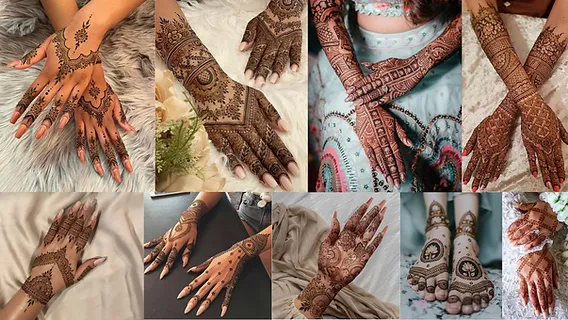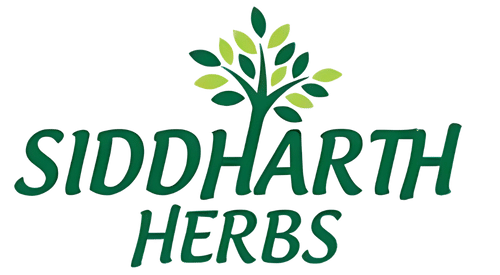Blog
Wedding Season Henna Product Demand Patterns in India: A Comprehensive Study

As the vibrant and elaborate wedding season unfolds across India, the enchanting art of henna application takes center stage, becoming a focal point of beauty, tradition, and celebration. The demand for henna products swells during this time, reflecting not only cultural significance but also evolving consumer preferences and market dynamics. This study delves into the rich tapestry of henna’s role in Indian weddings, explores the intricate patterns of demand for henna products, and identifies the factors driving this enchantingly important market.
In the context of Indian weddings, henna—revered as mehndi—is more than a decorative element. It serves as a poignant symbol of love, prosperity, and joy, deeply ingrained in the cultural fabric of the nation. The application of henna signifies joyous occasions and captures the essence of familial bonding during rituals. This analysis seeks to illuminate the cultural significance of henna, identify demand patterns, and explore consumer behavior and market trends, ensuring that the future of henna products remains as rich and vibrant as the art itself.
Understanding the Cultural Significance of Henna in Indian Weddings
Henna holds a profound place in Indian weddings, symbolizing not just beauty but a host of spiritual and cultural meanings. Traditionally viewed as an auspicious element, henna is applied during significant celebrations, such as weddings, festivals, and religious occasions. The Mehndi ceremony typically takes place a day before the wedding, transforming into a lively gathering filled with music, dance, laughter, and the intricate application of henna on the bride’s hands and feet. Each floral or paisley design intricately tells a story, reflecting well-wishes and blessings for the couple.
The artistry involved in henna application goes beyond aesthetics; it embodies emotions, cultural narratives, and communal ties. In many communities, the richness and depth of the henna stain is believed to symbolize the strength of love between the couple, further intertwining the cultural significance of henna with the overall wedding celebration.
Exploring Demand Patterns of Henna Products During Wedding Season
Peak Seasonality and Cultural Driving Forces
The demand for henna products experiences pronounced peaks, primarily from October to March, aligning with the wedding season and numerous auspicious dates in the Hindu calendar. During these months, manufacturers and suppliers must navigate a surge in orders, often causing constraints in storage and supply. Understanding this peak season is crucial for industry stakeholders to optimize their efforts and resources effectively.
Cultural Significance
Henna is an indispensable component of bridal beauty rituals, enhancing the bride’s aesthetic while symbolizing happiness, love, and cultural continuity. Today’s brides embrace both traditional designs and contemporary expressions that blend culture with modern aesthetics, resulting in a more dynamic demand landscape.
Geographic and Demographic Influences on Consumption
India’s diverse cultural landscape yields significant variations in henna application and demand, influenced by regional traditions and consumer demographics:
- Regional Variations: Different states boast unique henna styles. Ornate and intricate designs are commonly found in Rajasthan, while Southern states may favor more minimalist floral patterns. Such distinctions play a crucial role in tailoring product offerings to suit local preferences.
- Urban vs. Rural Dynamics: Urbanization has shifted consumption patterns, favoring ready-to-use henna cones due to their convenience. In contrast, rural areas often celebrate traditional henna sources from local artisans, demonstrating a divergence in preferences that vendors must account for.
Key Influencers of Demand
Several external factors affect the current dynamics of the henna market:
- Health and Environmental Consciousness: A surge in consumer awareness of the dangers posed by synthetic additives has resulted in a propelled demand for organic and chemical-free henna products. Health-conscious consumers are prioritizing natural alternatives that reflect eco-friendly practices.
-
Digital and Social Media Influence: The emergence of platforms like Instagram and Pinterest has transformed henna design choices, as brides seek visually appealing and trend-driven designs. This trend has led to a demand for innovative products that capitalize on current aesthetics and social media trends.
-
Economic Factors: Increasing disposable income among families has translated into larger wedding budgets, allowing for enhanced investment in beauty and ritual elements, including henna applications.
-
Social Dynamics: The henna ceremony serves as a platform for familial bonding and community engagement, further driving demand as families gather to celebrate together.
Market Analysis
Product Preferences and Offerings
The henna market comprises various product types, each tailored to meet diverse consumer needs:
– Natural Henna Powder: This core offering features multiple packaging sizes catering to individual and bulk buyers, relying on quality ingredients from the finest henna-producing regions.
– Ready-to-Use Henna Cones: These are preferred for their convenience, particularly in urban settings where time constraints are evident.
– Henna-Based Beauty Products: With a growing demand for natural and chemical-free products, henna-infused skincare and hair care items have become prominent, appealing to health-oriented consumers.
Challenges in the Supply Chain
Despite the vibrant henna market, various challenges risk hindering product availability and quality:
- Quality Control Issues: The surge of synthetic henna products masquerading as genuine can mislead consumers and lead to health risks, emphasizing the need for educational campaigns about authentic henna.
-
Supply Dynamics: The artisanal nature of henna production introduces variability, stressing the need for transparency in the supply chain.
-
Sourcing Raw Materials: Environmental and climatic changes in henna-growing regions can directly affect the quality and yield, posing risks to market stability.
Innovations on the Horizon
The growth of the henna industry is also centered on several innovative practices that respond to market demands:
- Technological Innovations: New methods, including design stencils and eco-friendly packaging solutions, are shaping henna’s modern use while maintaining cultural integrity.
-
Product Diversification: The introduction of DIY henna kits enables consumers to engage creatively with henna as part of their beauty routines, rather than merely as a ceremonial element.
-
Sustainable Sourcing: With rising consumer awareness of sustainability, many companies are adopting fair-trade practices and ensuring ethical sourcing of raw materials, enhancing their brand image.
-
Research and Development: Continuous exploration of formulations with herbal and organic ingredients resonates with consumers who seek holistic wellness in their grooming routines.
Consumer Insights and Behavior
Understanding consumer motivations and preferences is vital for developing effective marketing strategies. An analysis suggests:
- Rise of Eco-Conscious Choices: Preference for organic options is increasing, driven by concerns about health and environmental impact. Brands that advocate transparency regarding their ingredient sourcing tend to garner consumer loyalty.
-
Customization and Personalization: With a growing desire for bespoke experiences, companies offering tailored henna products will foster deeper connections and heightened brand loyalty.
-
Community Engagement: The rise of social sharing of henna experiences online illustrates a communal aspect that drives demand and enhances the communal ties surrounding henna.
Case Studies: Best Practices
Case Study 1: A Leading Henna Brand’s Success
An established henna brand successfully adapted its strategy by employing social media marketing to boost consumer engagement. By showcasing dynamic henna designs through compelling visual content, they not only reached a broader audience but also stimulated product demand. The brand emphasized its commitment to organic henna, aligning itself with the rising consumer trend towards natural beauty products.
Case Study 2: A Local Artisan’s Revival
A local artisan in Rajasthan leveraged storytelling to emphasize the traditional significance of her henna applications. By utilizing social media for outreach and showcasing her cultural-rich designs, she reestablished her clientele and witnessed a significant increase in sales during the peak wedding season.
Future Directions
In envisioning the future, emerging trends in the henna market reveal a blend of tradition and contemporary consumer demands:
- Expansion into International Markets: As the cultural significance of henna gains global recognition, opportunities to introduce products to foreign markets are emerging, particularly among diaspora communities aiming to reconnect with their roots.
-
Experiential Marketing: Brands can capitalize on experiential events that center around henna art, fostering direct engagement and cultivating a communal atmosphere that attracts potential consumers.
-
Sustainability as a Core Value: Incorporating sustainable practices in manufacturing and sourcing will become increasingly integral to brand positioning as the beauty market shifts towards greener initiatives.
Conclusion
The demand patterns for henna products during India’s wedding season reveal a rich interplay of cultural traditions, modern consumer behaviors, and market dynamics. Honoring the profound significance of henna while welcoming innovation and sustainability can cultivate a thriving marketplace that celebrates the vibrant nuances of Indian wedding culture. With shifting consumer preferences toward health-conscious and eco-friendly choices, the future of henna remains bright, poised for continued growth through engaging storytelling and a return to rich cultural narratives.
Even as trends evolve, companies like Siddharth Herbs are dedicated to ensuring that henna flourishes as both a celebrated product and a cherished tradition, enriching the beautiful tapestry of Indian culture for generations to come.
For further details about Siddharth Herbs and their extensive range of henna products, visit their official website: siddharthherbs.com. You can also reach out through customer service at +91 74148 20911 or via email at [email protected] for inquiries regarding their offerings.
This comprehensive study of wedding season henna demand patterns captures the essence of a timeless tradition, while revealing the intricate details that shape today’s market dynamics, ensuring it remains relevant and inspiring in a rapidly changing world.

